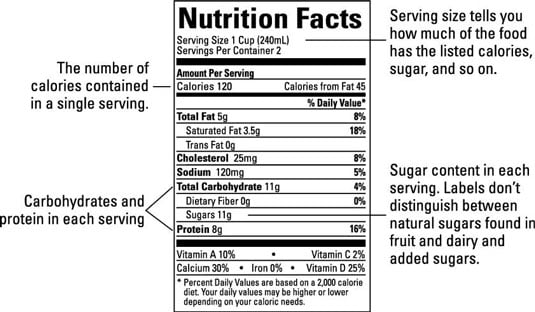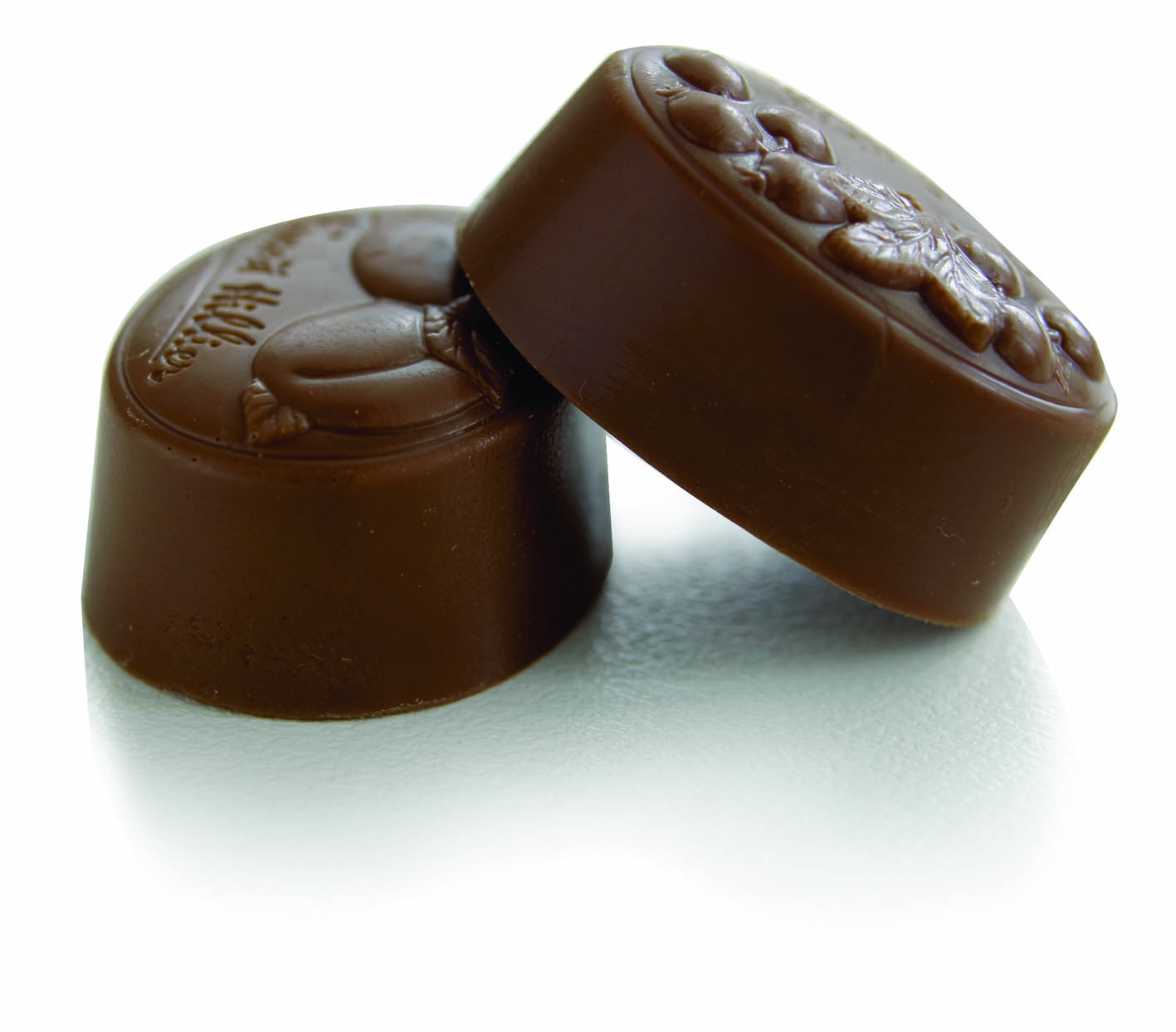43 understanding carbs on food labels
Food Labels Guide & Examples | How to Read Nutrition Labels - Video ... Below fat, 'Cholesterol' and 'Sodium' are listed. These top items are important to recognize and should be limited in a daily diet. However, many processed foods and fast foods contain high ... Understanding Pet Food Nutrition Labels | Featured Articles ... The first five ingredients make up 80 percent of the product.". Since protein is one of the most important elements of a pet's diet, Horn suggests trying to learn where the majority of the product's protein comes from, based on its first couple of ingredients. Animals should receive the majority of protein through specific animal meat ...
How to Read Food Labels | mySugr How to Read Food Labels Look at the Ingredients. The best place to begin is to look at the ingredients on the food label. Look for heart-healthy... Check the Serving Size. Before reading the rest of the label, look at the serving size. The rest of the information —... Carbs and Context. If you're ...

Understanding carbs on food labels
Food labels - understanding and knowing how to read them | Klinio An excellent understanding of how to read food labels depends on your knowledge of calories. The emboldened calorie value of 240 is the expected amount of calories for each serving. This means that the total calories in the container will be 240 x 4 = 960 calories. A higher calorie intake is associated with obesity. Understanding Food Labels and Nutrition - San-J Food labels explain the overall nutritional content. From top to bottom, you'll find information on: Serving size: This number tells you the ideal portion size, along with the number of total servings in the container. Calories: Calories are a basic unit of food energy. Caloric needs shift depending on the person, but the general guideline is ... Understanding Food & Nutrition Labels - Mount Carmel Blog These are some of the key terms you'll read on food labels and what they actually mean. Gluten-free. Gluten-free products are those that contain no gluten and are considered safe to consume by those with gluten intolerances or those who would like to avoid it. Organic. To earn the organic label, foods and products must contain at least 95% ...
Understanding carbs on food labels. Nutrition labels can be confusing, here's how to read them Nutrition labels are seen on food packaging on February 27, 2014 in Miami, Florida. (Joe Raedle/Getty Images/TNS) Joe Raedle, Staff / TNS. Q: You keep telling us to pay attention to the nutrition ... How to Read Food Labels | mySugr Before reading the rest of the label, look at the serving size. The rest of the information - such as carbs, calories, sugars, fiber, and more - will be based upon the serving size that's listed. Eating more than a serving size means you'll get more carbs, sugars, and calories than what has been listed. Looking at the serving size also ... What Food Labels Tell You | Smokefree If you want to take in less of a nutrient such as fat or sodium, choose foods with a lower % DV—5 percent or less. If you want to take in more of a nutrient such as fiber, pick foods with a higher % DV—20 percent or more. The information on a Nutrition Facts label is based on 2,000 calories a day. You may need to eat less or more than 2,000 ... Understanding food nutrition labels | Food Label - Nutrition - Head Topics This information can guide buyers on their decision-making process, whether for consumption or commercial purposes.\u00a0 Serving information The serving information, seen below the nutrition facts label, shows two data: the servings per container or the number of servings in the package or container, and the serving size or the amount of food ...
Nutrition Facts: How to Read Nutrition Labels - Greatist Common nutrition terms to know. The Food and Drug Administration (FDA) regulates terms used on food labels. Here are some to look for: Calorie-free: Less than 5 calories per serving. Low calorie ... Understanding the Food Label - Colony Diner & Restaurant The label also tells you what's actually in the food you are consuming. This includes the vitamins and minerals our bodies need to stay healthy like calcium, potassium, Vitamin D and iron. You can also see the total sugar, fat, cholesterol and carbohydrates, which may be important if you have high blood pressure, diabetes or are on a strict diet. Understanding Nutrition Labels - News-Medical.net The food manufacturers have to use these labels to effectively convey the information about the product to the consumer. The nutrition label helps the health-conscious consumer to make an informed ... Food Labeling & Nutrition | FDA Food labeling is required for most prepared foods, such as breads, cereals, canned and frozen foods, snacks, desserts, drinks, etc. Nutrition labeling for raw produce (fruits and vegetables) and ...
How To Read Food and Beverage Labels - National Institute on Aging At the top of the Nutrition Facts label, you will find the total number of servings in the container and the food or beverage's serving size. The serving size on the label is based on the amount of food that people may typically eat at one time and is not a recommendation of how much to eat. Read more about serving and portion sizes. How To Read Food Labels: Understanding the Basics - Instacart The nutrition facts table is usually found on the rear or the side of the label. This is perhaps the most useful part of a food label, providing a detailed breakdown of the product's nutritional content, including calories, protein, carbohydrates, fat, and more. 1. Beware of misleading claims. Fats, sugar, carbs: How to read a food label (and seven ... - Good Food The "total carbohydrate content" of the food will actually include the sugars within this number and give you an idea of the amount of fuel a food contains. For example, if you consider that a slice of bread or a piece of fruit contains 15-20 grams of carbs per serve, then a food that contains 60-80 grams of carbs per serve is an energy-dense ... Food Packaging Labels: How to Understand Nutrition Facts to Eat ... Food produced outside the U.S. must clearly display the name of the country of origin. Net Weight Statement. The label must include an accurate account of the quantity of the package by weight, volume, or count. Only the food should be considered in the weight, not the packaging.
How to Understand and Use the Nutrition Facts Label | FDA - U.S. Food ... It's important to realize that all the nutrient amounts shown on the label, including the number ...
Understanding Nutrition Labels - Facty Health Understanding Nutrition Labels. Food manufacturing companies in the U.S. are required by law to label all food products. They are legally required to provide information about calories, fat, sugar, salt, and nutritional values so that consumers can make informed decisions about their purchases. A lot of this information can feel alien, though ...

Reading Food Labels: Tips If You Have Diabetes - Mayo Clinic throughout Healthy Food Labels For ...
Understanding Nutrition Facts Food Labels - VEBA Resource Center Nutrition Labels on packaged, canned, and frozen foods can tell you a lot about what is in the food you eat. ... Understanding Nutrition Facts Food Labels. March 1, 2022. Healthy Eating; ... All of the nutrition information on a food label is based on that serving size. So you'll need to adjust the other numbers if you eat more or less. Total ...
Reading Food Labels - What You Need to Know - Drugs.com This label tells you what a serving size is and how many servings are in the package. Other information shown includes the amount of calories, fat, carbohydrate, protein, vitamins and minerals found in the food. Begin reading food labels at the top, with the serving size and number of servings in the package.
This Is How to Read a Nutrition Facts Label on the Keto Diet How to Read a Food Label on a Keto Diet 1. Carbohydrates. The carbs section, which includes Total Carbohydrates, Fiber, Sugars, Added Sugars, and Sugar Alcohols... 2. Macronutrient Ratio For Keto. Keeping the net carb count low is a must, but you also want to make sure you're getting... 3. Fat ...
Carbohydrates: How carbs fit into a healthy diet - Mayo Clinic Carbohydrates are a type of macronutrient found in many foods and beverages. Most carbs occur naturally in plant-based foods, such as grains. Food manufacturers also add carbs to processed foods in the form of starch or added sugar. Common sources of naturally occurring carbohydrates include: Fruits. Vegetables.
Street Smart Masterclass What's on a nutrition facts label? In reading food labels, you should not focus on one component only. It is essential to look at the entire label to better understand everything you may want to consider. Let's take a look at the components of a nutrition label and break it down: 1. Serving Size. It is best to start with this information.
The Basics of the Nutrition Facts Label - Academy of Nutrition and ... Carbohydrates: There are three types of carbohydrates: sugars, starches and fiber. Eat whole-grain breads, cereals, rice and pasta plus fruits and vegetables. Sugars: Simple carbohydrates, or sugars, occur naturally in foods such as fruit (fructose) and milk (lactose) or come from refined sources such as table sugar (sucrose) or corn syrup.






Post a Comment for "43 understanding carbs on food labels"